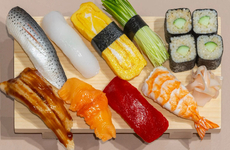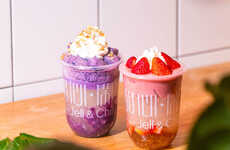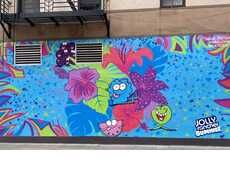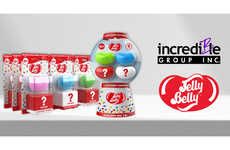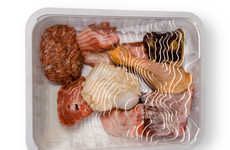
Deliously Creative International Sculptures by the Jelly Mongers (UPDATE)
Bianca — April 2, 2009 — Art & Design
References: nytimes & notcot.org
Whether you love or hate Jell-o, it’s undeniable this edible artwork by the self-called jelly mongers is incredible craftsmanship.
Sam Bompas of Eton, and his artistic partner Harry Parr of University College, recreate world landmarks using jelly. The gallery here shows their sweet replicas of architectural icons of London including St. Paul’s Cathedral and the Millennium Bridge as well as international marvels like Madrid’s new airport terminal. The fourth imagine shows the result of a delicious chemistry project using “food-safe quinine to make jelly that emits a bluish glow under black light,” according to the New York Times.
Check out some more jelly creations below.
Sam Bompas of Eton, and his artistic partner Harry Parr of University College, recreate world landmarks using jelly. The gallery here shows their sweet replicas of architectural icons of London including St. Paul’s Cathedral and the Millennium Bridge as well as international marvels like Madrid’s new airport terminal. The fourth imagine shows the result of a delicious chemistry project using “food-safe quinine to make jelly that emits a bluish glow under black light,” according to the New York Times.
Check out some more jelly creations below.
Trend Themes
1. Edible Artwork - The trend of creating intricate sculptures and replicas using edible materials presents disruptive innovation opportunities in the food and art industries.
2. Jelly Sculptures - The growing popularity of jelly sculptures as a unique form of artistic expression opens up disruptive innovation opportunities in the art and culinary industries.
3. Food-safe Quinine - The use of food-safe quinine to create edible jelly that emits a bluish glow under black light showcases disruptive innovation opportunities in the food and science industries.
Industry Implications
1. Food Industry - The food industry can explore disruptive innovation opportunities by incorporating edible artwork and jelly sculptures into their product offerings.
2. Art Industry - The art industry can tap into the trend of creating jelly sculptures and edible artwork to introduce novel art forms and attract a new audience.
3. Science Industry - The science industry can capitalize on the use of food-safe quinine to develop innovative food and beverage products that offer unique sensory experiences.
1.7
Score
Popularity
Activity
Freshness



